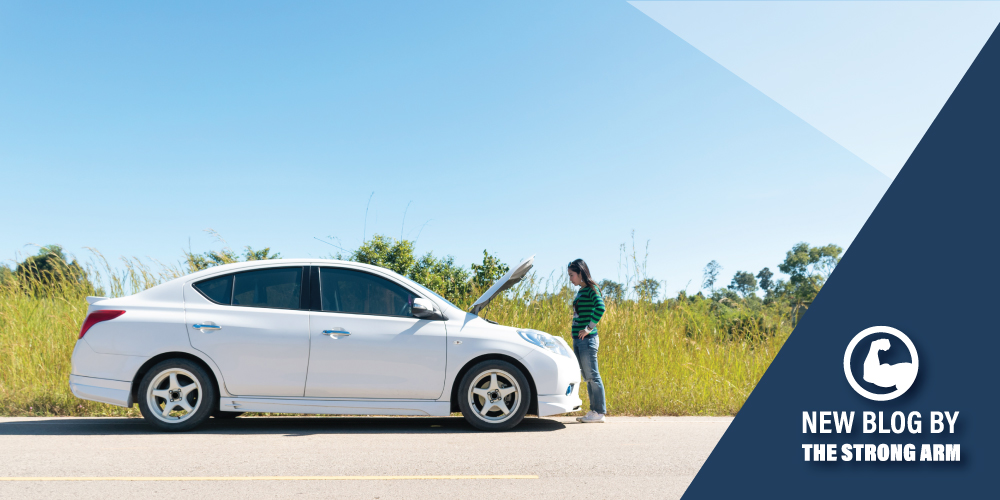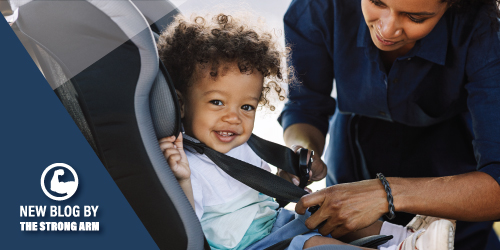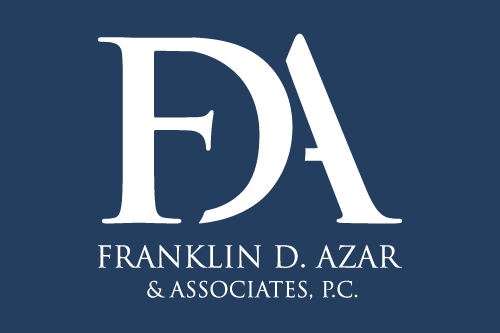Colorado Expands Its Safety-Minded “Move Over” Law

Colorado has joined nine other states in enacting a tough new law aimed at protecting stranded motorists and others facing emergency roadside situations.
Starting in August, House Bill 23-1123 requires drivers to move one lane away from a stationary vehicle with its hazard lights on. If a second lane is not available, you must at least slow down— 20 miles per hour less than the posted limit, or a maximum of 25 mph in an area with a speed limit of 45 mph or less.
The new law comes amid rising nationwide concerns over the deadly situations that arise when people are in the vicinity of a disabled vehicle — changing a tire, responding to another emergency, or waiting for help to arrive. Around 350 people die each year in the U.S. in such circumstances. Many of them are emergency responders — including tow truck drivers, a profession with 15 times the work-related mortality rate of other industries.
We’ve written before about Colorado’s current “Move Over” law, which was passed in response to the roadside death of Colorado State Trooper Cody Donahue in 2016. That law requires drivers to move over a lane from stationary emergency vehicles that have their lights flashing. The new law expands that requirement to all stationary vehicles with activated hazard lights.
A survey by AAA suggests that close to one in four people are unaware of the move-over law in their state. AAA has safety tips for drivers to help roadside workers, including:
- Avoid distractions and focus on the task of driving.
- Maintain enough distance between your vehicle and what you can see going on ahead of you to give yourself 20-30 seconds to respond to changing conditions by changing lanes and adjusting speed.
- When you see flashing lights or a disabled vehicle in the breakdown lane, slow down and prepare well in advance for a lane change. Allow others to merge into your lane when necessary.
- Allow extra space when following semi-trucks or large vehicles.
- Avoid sudden lane changes, especially on slick roads. Signal the change early and move over gradually.
- If you are unable to move over, slow down.
Child Car Seat Safety Tips
The importance of child car seats and restraint systems while traveling can’t be overemphasized. Crashes on the road are the leading cause of preventable deaths and serious injuries of children in the United States. According to the nonprofit Safe Kids Worldwide, using the right child safety seat in the right way can reduce the risk of death by 71 percent.
Yet more than half of the child safety seats in autos aren’t installed correctly or are otherwise being used improperly, putting kids in jeopardy.
Here are some tips that every parent should review before bundling up your brood for a car trip. First, a disclaimer: there’s no one-size-fits-all solution, and no single bit of advice can take the place of consulting your vehicle owner’s manual and the directions provided by the car seat manufacturer. Our tips are intended as helpful guidelines, not a comprehensive safety manual.
DECISION ONE: FACING FRONT OR REAR?
Infants should be in a rear-facing car seat at least until the age of one year. The National Highway Traffic Safety Administration recommends keeping a child in a rear-facing seat until age three or as long as possible, “until he or she reaches the top height or weight limit allowed by your car seat’s manufacturer.” When the child outgrows the rear-facing seat, it’s time for a forward-facing, appropriately sized car seat with a harness and tether.
GETTING THE RIGHT FIT
Make sure the car seat is properly secured by the seat belt or lower anchors (but not both at the same time). Choose the appropriate weight and height range for the five-point harness and periodically check to make sure that it provides a snug fit. When it gets too snug, meaning your child has outgrown it, it’s time to consider a booster seat.
ABOUT THOSE BOOSTER SEATS
Kids riding in a belt-positioning booster seat in the rear passenger compartment are nearly half as less likely to be injured in a car crash than those who are using a seat belt alone. Many experts recommend booster seats for those between the ages of eight and twelve, at which time they are probably able to use just a seat belt. Like a car seat and harness, booster seats need to be properly fitted and secured, but the child should also be mature enough to stay in the booster seat throughout the trip.
THE REAR IS SAFER
The back seat is the safest place to ride for children under the age of thirteen. The risk of injury from an expanding air bag in the front compartment, for example, exceeds what children face in a crash if they are properly positioned and belted or tethered in the rear passenger compartment.
COMMON INSTALLATION MISTAKES
- Wrong harness slot used
- Improper positioning of the harness retainer/chest clip
- Loose child restraint system installation
- Loose harness strap
- Improper seat belt placement with booster seat
Meet Ed and learn about his Car Wreck Experience
The Car Accident Lawyers At FDAZAR
For more than thirty years the attorneys at Franklin D. Azar & Associates have helped thousands of injured people obtain complete and timely compensation for their losses. Our proven track record and expertise in serious injury cases have allowed us to grow into the largest personal-injury law firm in Colorado, with offices in Denver, Aurora, Thornton, Fort Collins, Greeley, Grand Junction, Colorado Springs, and Pueblo. If you’ve been injured in a bus, car, truck, or motorcycle accident, you may be entitled to compensation. Please call the car accident attorneys at FDAzar day or night at 800-716-9032, or contact us here for a free consultation and no-obligation evaluation of your case.
Join Frank Azars Monthly Newsletter
"*" indicates required fields



